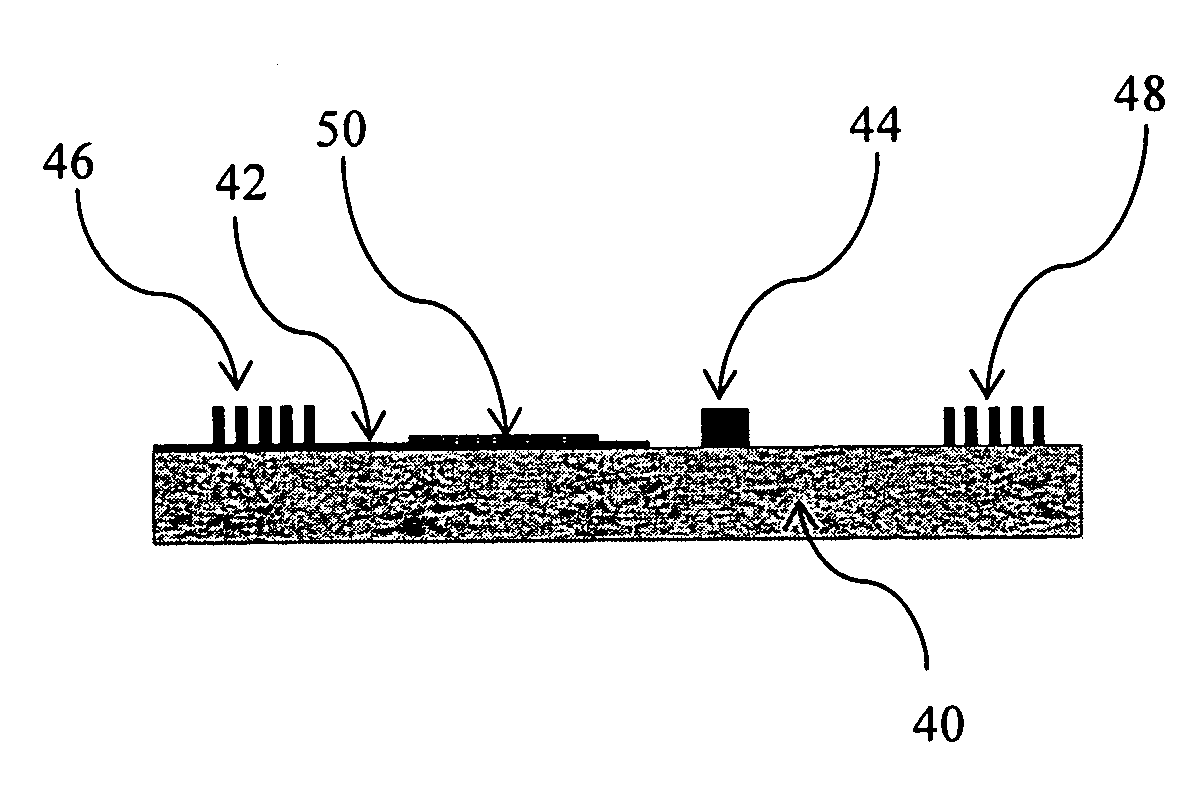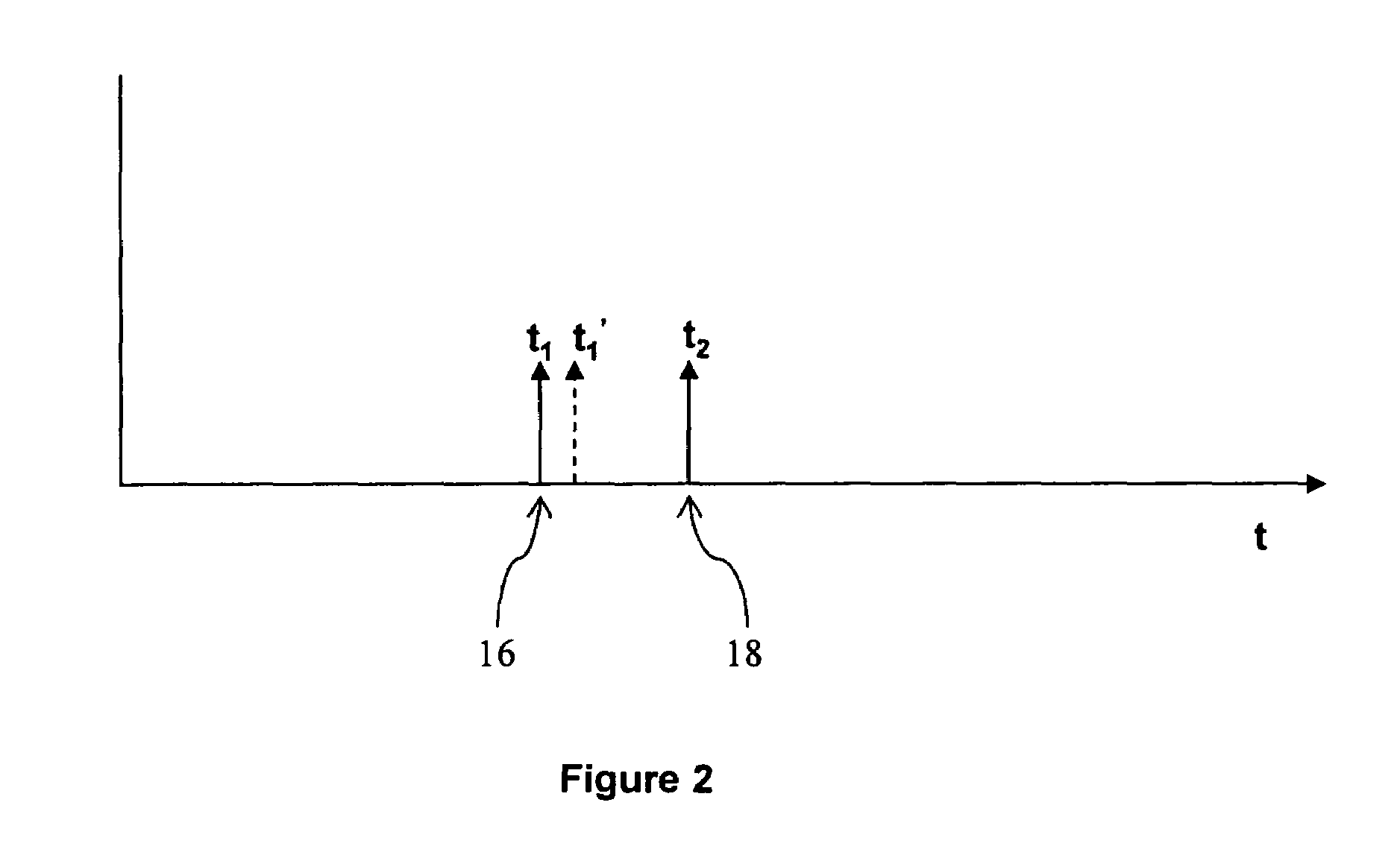Passive SAW-based hydrogen sensor and system
a hydrogen sensor and saw-based technology, applied in the direction of positive temperature coefficient thermistors, instruments, specific gravity measurements, etc., can solve the problems of palladium nanoclusters swelling and harder wet palladium surfaces
- Summary
- Abstract
- Description
- Claims
- Application Information
AI Technical Summary
Benefits of technology
Problems solved by technology
Method used
Image
Examples
second embodiment
[0037]the current invention utilizes resistive elements formed from the palladium nanocluster films to control the performance of the SAW device in such a way as to vary the device response with exposure to hydrogen. Such an embodiment will now be described with reference to FIG. 4. A piezoelectric substrate 24 has an input transducer 26 and two reflective structures 28 and 30 formed on a surface thereof. Each reflective structure is subdivided into separate portions 28a, 28b and 30a, 30b. A variable resistance element 32, 34 is connected with each reflective structure. An example of a variable resistance element is shown in FIG. 5. Each variable resistance element is formed from a palladium nanocluster film 36 formed in a pattern on a siloxane SAM 38. The SAW device of FIG. 4 utilizes regeneration reflections and thus uses split finger electrodes. Without hydrogen present or with hydrogen present at low background levels, the reflectors 28, 30 each have a predetermined center of re...
PUM
| Property | Measurement | Unit |
|---|---|---|
| thickness | aaaaa | aaaaa |
| temperatures | aaaaa | aaaaa |
| temperatures | aaaaa | aaaaa |
Abstract
Description
Claims
Application Information
 Login to View More
Login to View More - R&D
- Intellectual Property
- Life Sciences
- Materials
- Tech Scout
- Unparalleled Data Quality
- Higher Quality Content
- 60% Fewer Hallucinations
Browse by: Latest US Patents, China's latest patents, Technical Efficacy Thesaurus, Application Domain, Technology Topic, Popular Technical Reports.
© 2025 PatSnap. All rights reserved.Legal|Privacy policy|Modern Slavery Act Transparency Statement|Sitemap|About US| Contact US: help@patsnap.com



